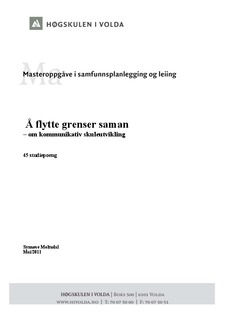| dc.description.abstract | In autumn 2006, the Knowledge Promotion Reform (Kunnskapsløftet) was introduced in the 10-year compulsory school and in upper secondary education and training in Norway. The transition to an information/knowledge-based society was the explicit basis for this reform, and schools were provided with newfound freedom in order to adapt the development of learning activities to local conditions. But this freedom was to be controlled. The objectives and competence aims were therefore defined and formulated on a national ministry level, but the responsibility for achieving targets were located locally on each school. This is a targetoriented management paradigm we know from the concept of New Public Management.
But research on how the Knowledge Promotion Reform has been conducted has revealed that the bureaucratic system does not rely on teachers and local forces' ability and willingness to implement the reform as intended. They view a strictly instrumental implementation as the best way to ensure intended results, for example by nationally standardized tests. Yet, research also reveals that there are minor collegiate groups at each school who, by their own means, are doing development work initiated through the reform.
The main research question discussed in this paper is: How can a communicative reform implementation contribute to school development and pupils' and teachers' learning opportunities as intended in the Knowledge Promotion Reform?
The central theme is how school development can be introduced in the transition to an information/knowledge-based society, and how learning and school development can occur through communicative work of reforms in the school organization. The theme will be elaborated through both empirical analyses and theoretical discussions.
The key theoretical perspective in this paper is Jürgen Habermas's theories on communicative and instrumental rationality and reason, and Gunnar Berg's “friromsmodell”(1999) for school development. This model shows how the school can develop in the gap between the legaland the legitimate framework.
The most important findings provided in this paper are how communicative and collaborative implementation can contribute to a hermeneutic and more complete understanding of the reform. In addition it shows how deliberative procedures continually place the existing practice in a critical light, which again may contribute to school development. | no_NO |
